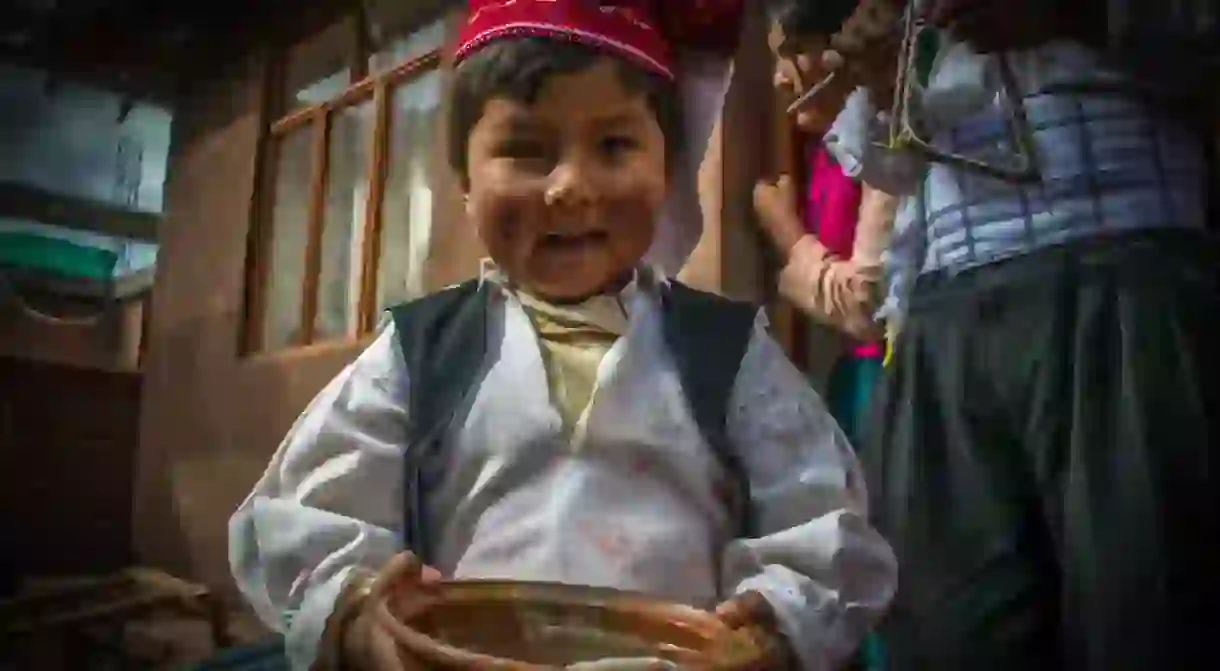These Photos Will Make You Want to Visit Taquile Island in Peru

Shut off from the modern world, up until a few years ago it was nearly impossible for visitors to stay on Lake Titicaca’s Isla Taquile. In an attempt to attract more tourism to its shores, Taquileños are following in neighbour island Amantaní’s footsteps and opening their homes, and their hearts, to tourists. Here are 16 photos that will make you want to visit Lake Titicaca’s Taquile island.
Stunning scenery
Taquile island, surrounded by Lake Titicaca’s piercing blue waters and surrounding islands, offers spectacular views from every angle.

With no motorised vehicles allowed on the island and little light, noise or rubbish pollution, Taquile is very much an untouched paradise.

In fact, you’re far more likely to bump into a herd of grazing sheep than a car or bike—or even another tourist.

The north of the island is also home to deserted, pristine, white-sand beaches that allow the locals to take a refreshing dip in the crystal-clear waters of Lake Titicaca.

Taquile is marked by its Incan cobbled paths and stone archways, which mark the beginning and end of the different communities on the island. The arches also represent an official welcome to visitors each time they pass through each mini-region of the island.

Inca ceremonial sites
Taquile is home to two sacred Inca ceremonial sites built on the highest part of the island.

They are so sacred that locals are only allowed to enter once a year during the annual Pachamama (Mother Earth) offering in the presence of the highest shamans.

The main ceremonial site is closed off and strictly forbidden to enter, but it’s possible for visitors to enter a small, walled off section where it’s possible to view the ceremonial site from a short distance.

Beautiful families
Whilst the scenery and archaeological ruins are undoubted highlights, what really makes this place special is its people.

Families on Taquile welcome visitors into their homes, showing you their customs, traditions and way of life.

They’re full of life, always smiling, and—most importantly—welcome their visitors as if they were family.

Children play a big role in helping the family in daily tasks, including the important ploughing and sowing of the quinoa and potato terraces.

Fascinating traditions
Taquile is known for producing some of Peru’s best quality textiles. In fact, their hand-knitted hats, gloves and cumberbund-like waistbands are considered so special that, in 2005, they were named Masterpieces of the Oral and Intangible Heritage of Humanity by UNESCO.

What few people know, however, is that the making of these intricate, hand-knitted handicrafts is an activity exclusively reserved for men. For Taquileños (men from Taquile), knitting—seen as a highly intricate and creative skill—is a way to publicly show your worth to the community.

While knitting may be reserved for men, the women are in charge of spinning the wool and weaving the intricate Chumpis; the thick, cummerbund-like waistbands worn by all men in the community.

When it comes to agriculture, Taquileños and Taquileñas still use ancient farming techniques and tools. For example, the Incan Chaki Taklla, a foot plough made of a wooden pole with a sharp point made from stone or metal, is used for ploughing and sowing the potato terraces.

To arrange a homestay directly with the local community, contact Jaime at info@taquile.net or on (51) 971141905. You can find their website here for more details.













